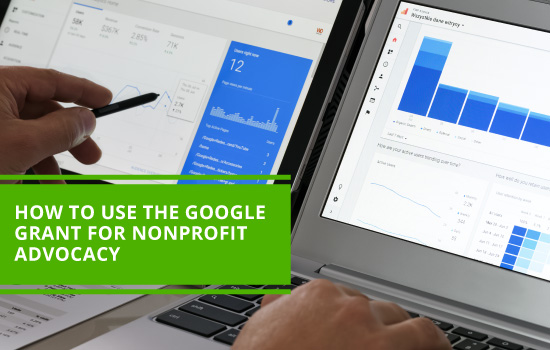Donor Management Software for Nonprofits: 3 Considerations
In today’s landscape, advancements in technology for nonprofits are constantly offering new and different ways to help charitable organizations succeed. With so many options out there, it’s important not to forget about the foundational software upon which the rest of your tech stack should be built: donor management software.
If that doesn’t sound familiar, it’s probably because you’ve heard donor management software referred to by one of its other names—maybe “nonprofit CRM” or “donor database.” They all refer to the same tool: the platform that serves as your directory for donor data and the hub through which you interact with donors.
Here at GivingMail, we design and implement direct mail fundraising campaigns for organizations big and small, so we’re well-acquainted with nonprofits’ need to keep track of their donors’ information for fundraising purposes.
Over the years, we’ve learned a thing or two about nonprofit database software. And we can tell you this: the best donor management software providers have three things in common. They increase donor retention rates, facilitate peer-to-peer fundraising, and produce valuable data metrics for your organization.
How to Use The Google Grant for Nonprofit Advocacy
Nonprofits are unique in that they often mobilize funds and people towards social goods. In order to achieve their goals, nonprofits must utilize various aspects of advocacy in order to reach a wider audience and get them to take action. Advocacy is the process of raising awareness and generating support for an issue related to a nonprofit’s mission. Advocacy often directly involves the work of a nonprofit organization, but can also be adjacent to the mission of the organization. For example, an animal welfare nonprofit’s day-to-day operations may not involve much advocacy. But there may be times when they need to lobby an elected official or raise awareness of something in their community.
Advocacy can take many forms, but it’s efficient for nonprofits to use their existing tools to aid their advocacy efforts. One of the most effective tools for gaining greater awareness for your advocacy efforts is the Google Grant which provides 501(c)(3) nonprofits with $10,000/month of credit to spend on Google Ads in search results. Using the Google Ad Grant is an excellent way for nonprofits to enhance their existing marketing efforts and bolster their advocacy campaigns as well.
3 Reasons to Invest in Strategic Volunteer Training
The best training for volunteers is strategic. This might make sense from a birds-eye view, but what does it mean, exactly, for your cause?
It means that your volunteers are a critical component of your team and that their tireless efforts help you drive your mission forward. It means that without them, you likely wouldn’t be able to sustain effective and cost-efficient operations. It means that your volunteers should be well-equipped with the tools and resources they need to help, and that you should not neglect their training in pursuit of bigger and better things.
At Nonprofit Courses, we work to provide free and low-cost volunteer training programs to set your supporters—and your organization—up for long-term success. In case you’re still not convinced, here are three key reasons to invest in strategic volunteer training:
- Strategic volunteer training creates leaders.
- Strategic volunteer training provides context.
- Strategic volunteer training equips ambassadors.
Are you ready to learn more about the importance of volunteer training programs and the range of benefits they can bring to organizations like yours? Let’s jump in.
Read More
Turn your grassroots campaign into social media magic with “Social Selfie”
Can “offline” grassroots canvassing become a resource to fill your digital and social media pipeline? Using the “social selfie” feature from Grassroots Unwired will allow you to get so much more out of the hard work you are putting in by turning support in the field into social media posts in a matter of minutes.
The “social selfie” feature allows you to effortlessly connect the grassroots support you are getting in the field to your campaign’s social media presence and connect and complement these two vital parts of your effort.
3 Tips to Conducting a Successful PIT Count
 According to HUD Exchange, “The Point-in-Time (PIT) count is a count of sheltered and unsheltered homeless persons on a single night in January. HUD requires that Continuums of Care (CoCs) conduct an annual count of homeless persons who are sheltered in emergency shelter, transitional housing, and Safe Havens on a single night.”
According to HUD Exchange, “The Point-in-Time (PIT) count is a count of sheltered and unsheltered homeless persons on a single night in January. HUD requires that Continuums of Care (CoCs) conduct an annual count of homeless persons who are sheltered in emergency shelter, transitional housing, and Safe Havens on a single night.”
This year we’ve partnered with 5 unique organizations to conduct their 2020 Point-in-Time counts, from which we have come up with these 3 tips for conducting a successful count:
The Evolution of the 4EventDay Mobile App
We get it! There are a ton of moving parts to managing a successful peer-to-peer fundraising event. It can quickly get overwhelming! Our goal? Make it easier on you, your volunteers and ensure your participants have the best day-of experience. We are transforming the interactions that non-profits and their participants have on the day of their events through our 4EventDay mobile app. And after every event, we continue to ask, “What can we do to make it even better?”
NEW FEATURE: Assign Bibs at Check-In
 We are excited to announce yet another innovative new feature: assigning bib numbers at check-in! Our development team has been working hard so that the Grassroots Unwired 4EventDay mobile app can have the ability for volunteers to assign a participant’s bib number and/or race tracking ID during the mobile check-in process. This new feature makes check-in faster, more efficient and provides a positive experience for your participants.
We are excited to announce yet another innovative new feature: assigning bib numbers at check-in! Our development team has been working hard so that the Grassroots Unwired 4EventDay mobile app can have the ability for volunteers to assign a participant’s bib number and/or race tracking ID during the mobile check-in process. This new feature makes check-in faster, more efficient and provides a positive experience for your participants.
New Feature: Mark Participants as Finished!
The Why:
Our client, Swim Across America, unites the swimming community by hosting benefit swims that raise money to fund life saving cancer research and clinical trials. They came to us with a new feature request to address an important safety issue they have on the day of their peer-to-peer events. Swim Across America needed the ability to identify when a swimmer has left the water. They needed to be able to see if everyone made it out of the water safely and in turn know how many individuals (if any) are still in the water.
The Shots Story- Language Barriers Make a Difference
When my father was 18 years he worked as a busboy, clearing dishes in upscale restaurants in downtown Long Beach, California.
It was his first year in the United States, and like many, many, immigrants chasing the American Dream, he went to community college for evening classes to learn English.
How to Spend Your P2P Event Advertising Budget
Let’s be honest, your advertising budget for your peer-to-peer event is never as big as you would like or even need it to be. That’s why collecting data around what ad method is most successful in getting individuals to participate in your event is imperative to ensure you are spending your advertising dollars where it truly counts!







